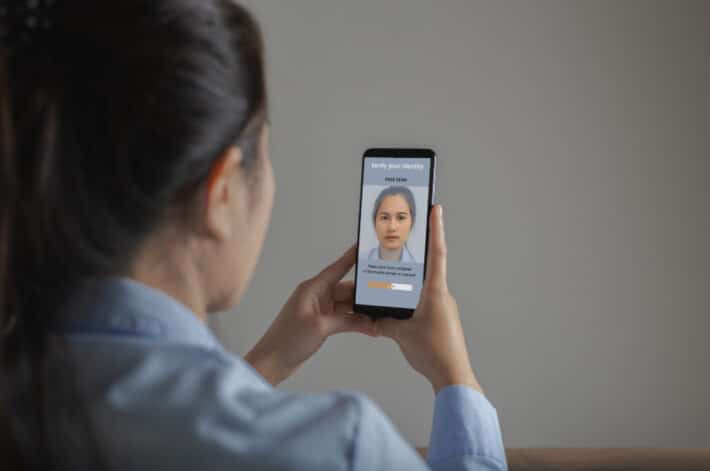The Psychology Behind User Perception Of Identity Verification

In the contemporary digital landscape, the process of identity verification holds significant importance in facilitating secure online transactions and engagements. The necessity of identity verification prompts reflection on its criticality in mitigating potential risks associated with unverified identities. This article delves into the psychological behind users’ perceptions regarding identity verification, presenting an examination of various verification methodologies, factors that shape user perceptions, and the ramifications of negative perceptions in this domain.
We invite you to explore insights on how organizations can enhance user perceptions concerning identity verification, alongside a contemplation on the future trajectory of this crucial process.
Why is Identity Verification Important?
Identity verification is of paramount importance as it serves to validate the identities of individuals, thereby bolstering security measures, fostering user confidence, and safeguarding online identities through robust authentication procedures.
What are the Risks of Not Verifying Identities?
The failure to verify identities presents considerable risks, including identity theft, a higher occurrence of identity fraud, and compromised security of user data. These risks can erode the efficacy of security protocols.
Identity theft, for instance, can lead to financial losses, harm credit histories, and cause emotional distress for those affected. In recent times, there have been several instances of data breaches where hackers exploited inadequate identity verification procedures to illicitly access sensitive information. These breaches can have extensive consequences, ranging from exposing personal data to enabling fraudulent activities like phishing schemes and online fraud. By neglecting proper identity verification procedures, organizations not only compromise their own security but also endanger the privacy and trust of their customers.
How Does Identity Verification Work?
Identity verification operates via a methodical process that leverages sophisticated technology and diverse authentication methods to validate the legitimacy of an individual’s asserted identity, thereby guaranteeing a secure and streamlined user experience.
What are the Different Methods of Identity Verification?
Various methods of identity verification encompass biometrics, digital identity verification, and identity recognition techniques, each presenting distinct advantages and applications within the verification process.
Biometric authentication stands as a state-of-the-art verification approach that relies on unique physical characteristics such as fingerprints, facial recognition, or iris scanning to authenticate an individual’s identity. This method offers a high level of security and precision, rendering it increasingly favored in sectors such as finance and border control.
Conversely, digital identity verification entails authenticating an individual’s identity through online channels, such as document verification and knowledge-based authentication. This method proves convenient for both users and businesses, particularly within the realm of online transactions and remote services.
Traditional identity recognition techniques, such as ID cards and passports, continue to hold significance in physical environments where digital methods are unfeasible or impractical.
What are the Advantages and Disadvantages of Each Method?
Each identity verification method presents a unique set of advantages and disadvantages that can influence user trust, identity validation, and perceptions of security in different ways.
Traditional password-based authentication, for instance, offers familiarity and ease of use for most users. However, it is vulnerable to phishing attacks and password breaches, which can compromise identity validation and diminish trust levels.
Conversely, biometric authentication methods like fingerprint or facial recognition offer heightened security features and expedited access, thereby enhancing user trust and identity validation. Nonetheless, some users may express apprehensions regarding the storage of biometric data, impacting their overall perceptions of security.
By comprehending these trade-offs, organizations can make informed decisions when selecting an authentication method that effectively balances user trust, identity validation, and security perceptions.
What Factors Influence User Perception of Identity Verification?
The perception of identity verification by users is influenced by a variety of psychological factors, encompassing aspects such as the overall user experience, the perceived trustworthiness of the verification process, and the reputation of the company overseeing its implementation.
1. Trust in the Company/Platform
The reliance on the company or platform plays a crucial role in shaping user trust and digital trust throughout the identity verification process. Users tend to place greater confidence in the authenticity and security of the verification procedure when they trust the company or platform overseeing the process.
A perception of the company’s trustworthiness and dedication to safeguarding data instills a sense of confidence in users, affirming that their personal information is being handled meticulously. The establishment and preservation of digital trust hinges on transparent communication, robust security protocols, and consistent compliance with privacy regulations. These elements are essential in cultivating a favorable user perception and reinforcing user confidence in the verification process overall.
2. Ease of Use
The user interface’s ease of use is a critical factor in determining user engagement, which significantly influences the overall user experience and satisfaction levels during the identity verification process.
A verification process that is user-friendly not only simplifies the required steps for users but also reduces the time and effort needed to complete the process. By incorporating intuitive design elements and providing clear instructions, users are more inclined to actively participate in the verification process, resulting in a more seamless experience. A smooth user experience plays a crucial role in retaining users and fostering trust in the platform.
When users feel adequately supported and guided through each verification step, they are more likely to have a positive interaction and be satisfied with the service overall.
3. Speed of Verification Process
The swiftness of the verification process is pivotal in meeting user expectations and significantly affects user satisfaction levels. When users encounter a prolonged or sluggish verification process, it can result in frustration and have an adverse effect on their overall experience.
In the contemporary fast-paced digital landscape, users anticipate efficiency and prompt responses. Striking a balance between rapidity and precision is imperative – although expedited verifications hold importance, guaranteeing that the process is comprehensive and secure is equally essential.
A seamless and expeditious verification process not only augments user satisfaction but also fosters trust and loyalty towards the platform or service provider.
4. Security Measures in Place
The implementation of security measures is crucial to guaranteeing perceived security and efficient identity protection throughout the verification process. Incorporating strong security measures, such as multi-factor authentication, biometric verification, and encryption protocols, greatly enhances the safeguarding of personal information and deters unauthorized access. These measures not only protect sensitive data but also establish confidence with users by showcasing a dedication to their privacy and security.
Maintaining an appropriate equilibrium between rigorous security protocols and user convenience is essential to prevent user dissatisfaction and ensure a seamless verification process. A user-friendly interface and precise instructions can assist in streamlining the process while upholding security standards.
How Can Companies Improve User Perception of Identity Verification?
Organizations have the opportunity to enhance user perception of identity verification by prioritizing trust-building initiatives, implementing user-friendly processes, and integrating robust security measures aimed at improving the overall user experience.
1. Clear and Transparent Communication
Effective and transparent communication plays a crucial role in addressing user concerns and establishing trust throughout the identity verification process. When users are prompted to verify their identity, they frequently harbor inquiries and doubts regarding the necessity of specific information and its intended use.
By preemptively furnishing lucid explanations and continuous updates during the verification procedure, users are inclined to feel reassured and confident that their personal data is being managed conscientiously.
The transparency in communication cultivates an environment of openness and integrity between the user and the service provider, resulting in a streamlined and dependable verification experience.
2. User-friendly and Efficient Verification Processes
The importance of user-friendly and efficient verification processes cannot be overstated in ensuring user acceptance and satisfaction.
When verification processes are straightforward, intuitive, and swift, users are more inclined to adopt them without encountering frustration. A seamless verification experience not only enhances user satisfaction but also fosters trust in the system. On the contrary, laborious and intricate verification procedures have the potential to discourage users, resulting in possible drop-offs and a negative perception of the platform. By giving priority to user-friendly and efficient verification methods, businesses can establish a favorable user experience, boost user retention rates, and ultimately cultivate a loyal customer base.
3. Implementing Strong Security Measures
The implementation of robust security measures is imperative in ensuring the security of identities and enhancing user confidence in the verification process. These measures are instrumental in protecting sensitive personal information, including financial data and personal identifiers, from unauthorized access or misuse. By deploying encryption protocols, multifactor authentication, and regularly updating security software, organizations can establish a strong defense against cyber threats.
The incorporation of stringent security measures reassures users that their identities are safeguarded, thereby cultivating trust and promoting a positive user experience. This, in turn, bolsters the credibility and dependability of the verification process, resulting in heightened levels of user confidence and satisfaction.
What Are the Implications of Negative User Perception of Identity Verification?
Adverse user perceptions regarding identity verification can result in broad implications, such as a loss of customer trust, reduced user engagement, and potential legal and regulatory ramifications.
1. Loss of Customer Trust and Loyalty
A negative perception of identity verification can have detrimental effects on customer trust and loyalty, which can compromise the long-term efforts invested in building trust.
When customers hold negative views of identity verification processes, they may raise doubts regarding the security and dependability of a company’s operations. This skepticism can undermine the foundational trust that businesses strive diligently to establish with their clientele.
Adverse user experiences with verification procedures can influence customer loyalty, as individuals may be inclined to switch to competitors they perceive as more reliable. Consequently, it is imperative for companies to prioritize the creation of positive and seamless verification experiences to foster and sustain customer trust and loyalty over time.
2. Decrease in User Engagement and Conversion Rates
Adverse user perceptions of identity verification can lead to reduced user engagement and decreased conversion rates, which can have a significant impact on overall user acceptance.
When users hold negative views of the identity verification process, they may exhibit reluctance to complete the necessary steps, leading to diminished engagement levels on the platform. This, in turn, can culminate in lower conversion rates as users are less inclined to proceed with transactions or interactions.
User acceptance is a pivotal factor in preserving a constructive relationship between the platform and its users, influencing their overall experience and their willingness to interact with the services offered.
3. Potential Legal and Regulatory Consequences
Failure to address negative user perception of identity verification can have serious legal and regulatory implications, underscoring the critical importance of compliance and effective verification practices.
Negative user perception not only impacts a business’s reputation and credibility but also exposes it to potential legal risks. In today’s digital landscape, adherence to regulatory requirements is essential for organizations to safeguard sensitive data and prevent fraudulent activities.
By implementing robust identity verification processes, companies can effectively manage risks associated with non-compliance and ensure adherence to legal standards. The utilization of advanced verification technologies and secure protocols can not only improve user experience and enhance credibility but also provide protection against potential legal consequences.
What is the Future of Identity Verification?
The future of identity verification is anticipated to undergo substantial advancements due to the emergence of new technologies, an increased emphasis on enhancing user experience, and the implementation of stricter regulations that are influencing the current landscape.
1. Advancements in Technology
Technological advancements, particularly in biometric authentication and identity verification technologies, are poised to be pivotal in shaping the future of identity authentication.
These cutting-edge technologies are revolutionizing the means by which individuals confirm their identities, offering enhanced security and efficiency in verification processes. Biometric authentication, encompassing functionalities such as fingerprint scanning, facial recognition, and iris scanning, delivers a heightened level of precision and aids in the deterrence of fraudulent activities. Progress in artificial intelligence and machine learning has bolstered the functionalities of identity verification tools, rendering the process swifter and more dependable.
With the mounting adoption of these state-of-the-art solutions by businesses and institutions, the realm of identity verification is transitioning towards a more seamless and robust paradigm.
2. Increased Focus on User Experience
The future trajectory of identity verification trends points towards an increased emphasis on enhancing user experience with the goal of improving user satisfaction and optimizing user interaction. This user-centric approach acknowledges the critical role that user experience plays in the effectiveness of identity verification processes.
By prioritizing user satisfaction and interaction, organizations can cultivate trust and loyalty among their users, consequently leading to heightened retention rates and a more streamlined verification procedure.
To realize this objective, essential strategies include the implementation of intuitive interfaces, the provision of clear instructions, and the facilitation of real-time feedback. Integration of biometric authentication methods and customization of user preferences can further elevate the overall experience and ensure a smoother verification journey for users.
3. Stricter Regulations and Compliance Measures
The future landscape of identity verification will be significantly influenced by more stringent regulations and compliance requirements, underscoring the need for robust identity verification protocols.
The primary objective of these regulations is to elevate security standards and safeguard individuals’ personal data from potential misuse. Through the implementation of stringent identity verification protocols, businesses and organizations can verify the legitimacy of customer identities and protect themselves against fraudulent activities. This heightened focus on identity verification not only enhances consumer confidence but also serves as a deterrent against identity theft and various forms of cybercrimes. Adherence to these measures is essential for preserving the integrity of online transactions and upholding individuals’ privacy in the modern digital era.
Frequently Asked Questions
What is the psychology behind user perception of identity verification?
The psychology behind user perception of identity verification refers to the various psychological factors that influence an individual’s thoughts, feelings, and behaviors when it comes to verifying their identity online. This can include factors such as trust, perceived security, and convenience.
Why is user perception important when it comes to identity verification?
User perception is important when it comes to identity verification because it can greatly impact an individual’s willingness to go through the verification process. If users have a negative perception, they may be less likely to trust the platform and may be hesitant to provide their personal information, leading to a high drop-off rate for verification.
How does trust play a role in user perception of identity verification?
Trust is a key factor in how users perceive identity verification. If users trust the platform and believe their personal information will be kept secure, they are more likely to feel comfortable going through the verification process. On the other hand, if users do not trust the platform, they may be skeptical of providing their personal information for verification.
What impact does perceived security have on user perception of identity verification?
Perceived security plays a significant role in user perception of identity verification. If users feel that their personal information is not secure, they may be hesitant to go through the verification process. This can be influenced by factors such as the platform’s reputation, security measures in place, and data protection policies.
How does the convenience of the verification process affect user perception of identity verification?
The convenience of the verification process can greatly impact user perception. If the process is too complicated or time-consuming, users may view it as a hassle and be less likely to complete it. On the other hand, a user-friendly and efficient verification process can improve perceptions and increase the likelihood of users completing the process.
What are some strategies for improving user perception of identity verification?
Some strategies for improving user perception of identity verification include providing clear and transparent information about the verification process and security measures in place, offering a user-friendly and efficient process, and building a strong reputation for data protection and security. Additionally, providing options for alternative verification methods can also help improve user perception.



